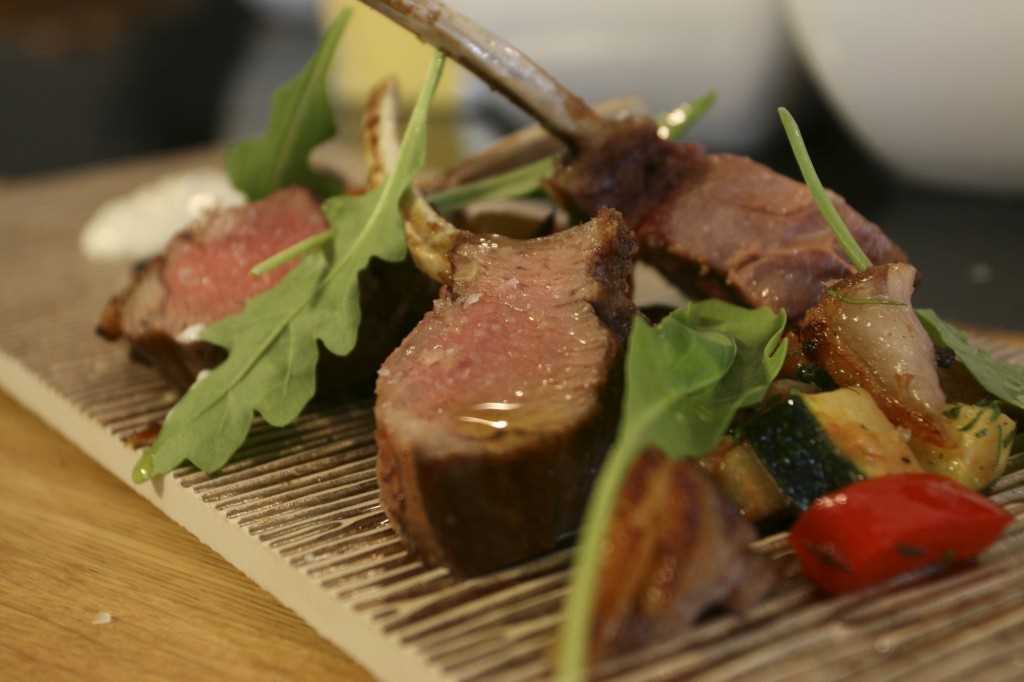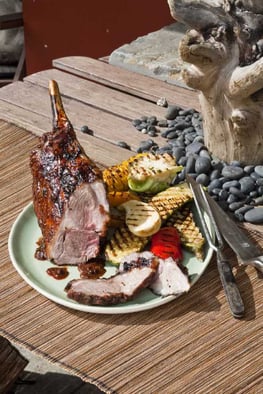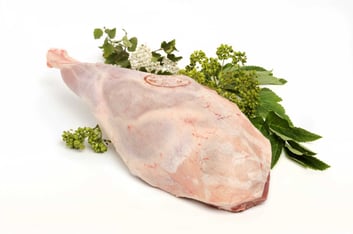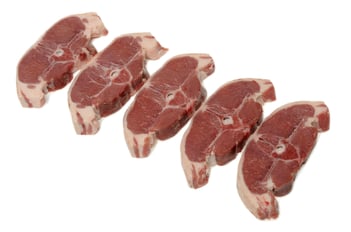It is lamb-season in Iceland when the newly slaughtered lifestock is celebrated throughout the country
Icelanders love their lamb and autumn is the traditional lamb-season with the 4–5 month-old lifestock being slaughtered after roaming the highlands throughout the summer. It is more related to game than farm-animals. The meat is exceptionally tender, its texture fine and it is nutritious enough to have carried many an Icelander, adult or child, through relentlessly harsh winters.
 Traditional Quality
Traditional Quality
When producing high quality meat you need unpolluted raw materials and Icelandic sheep farmers can guarantee as much.
 Sheep farming in Iceland is as old as the settlement of Iceland itself. To this day farmers are rearing their sheep by a method established by centuries of tradition, with most farms still family-owned and operated. The breed is still the same as in the time of the Vikings – sturdy small animals, well adapted to the environment.
Sheep farming in Iceland is as old as the settlement of Iceland itself. To this day farmers are rearing their sheep by a method established by centuries of tradition, with most farms still family-owned and operated. The breed is still the same as in the time of the Vikings – sturdy small animals, well adapted to the environment.
The Protective Cold
Much of Iceland’s lamb production is simply based on sustainably harvesting the bounties of nature. The use of hormones is prohibited and antibiotics are strictly regulated. The Icelandic weather, unpolluted air and abundant supply of clean mountain water make the use of pesticides and herbicides unnecessary. The cool climate protects the land against many diseases and pests which plague agriculture in warmer latitudes. Due to Iceland’s geographical isolation and agricultural regulation, which prohibits the importing of live animals, many common animal diseases are unknown in Iceland.
The lambs are entirely reared outdoors. Their natural diet of sedge, willow, thrift, mass campion, and berries makes the Icelandic lamb instantly recognizable for its delicious and distinctive taste.

 Nutritional Facts
Nutritional Facts
In an environment where consumers are increasingly conscious of their health, food must be safe to eat, pure and nutritious. For these reasons, Icelandic lamb meat is becoming recognised throughout the world for its healthy nutritional value and unique taste. The Icelandic sheep is a direct descendant of the sheep first brought to the island by the Viking settlers. It has not been crossbred by importing other breeds.
The cold climate influences the composition of the plants the sheep graze on. The lambs also move freely through extensive wild pastures in pristine mountainous landscapes. This, and the young age at slaughter (4–5 months), gives the meat unique quality and properties. The average carcass weighs around 16 kg (35 lbs.). The muscle has a high proportion of Omega-3 fatty acids and iron, giving the meat its wild game flavour. The distinctive taste is a result of the wild pastures; the grass and the aromatic and spicy herbs on which the lambs graze.
Some subtle differences have been noted between the flavour of meat from lambs grazing in the highlands, the lowlands, and by the seashore. The meat is very tender and has a fine texture due to its high amount of red muscle fibres, which is influenced both by the breed and its grazing habits. The tenderness is enhanced by electrical stimulation and strict control of chilling rates.
And the best thing about the Icelandic lamb: It is the perfect match to any kind of herbs and spices.



